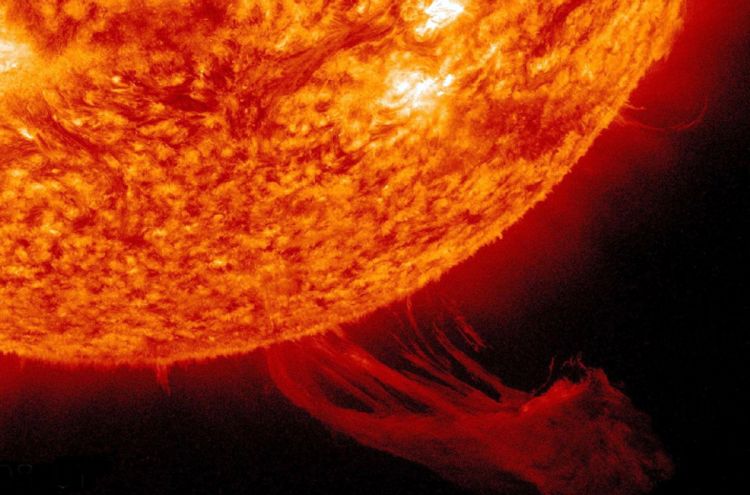A strong geomagnetic storm is expected to occur from October 10 to 12.
Axar.az reports that this information was provided by the Astrophysics Department of Baku State University.
It was noted that strong X-class flares (which create significant obstacles to radio wave propagation) have been observed in several active regions on the Sun's surface. A powerful X1.8 flare occurred on the night of October 9. The strong radiation and coronal mass ejections (CME) resulting from these flares will reach Earth on October 10-12.
High levels of solar activity are expected to continue until October 11-12, with the possibility of X-class flares. The resulting solar storms (S1-S2, which are medium but not classified as severe) will persist until October 10, after which they will decline to background levels. During this period, solar wind parameters will be in an excited state.
The coronal mass ejections (CME) generated by the X1.8 flare will propagate through interplanetary space at speeds of 1,200-1,400 km/s, while near Earth, their speed will be around 600-700 km/s. Due to several CMEs, the solar wind will experience a shock transition. The effects of the CMEs will be felt from October 10 to 12, with intensity decreasing after October 12, returning to background levels afterward. The sudden impulse generated will be observed by special satellites for 30-45 minutes and subsequently recorded by ground-based magnetometers.
On October 10-11, Earth's geomagnetic field will be in an excited state, with a geomagnetic activity index of 6-7. A G4 (strong) geomagnetic storm is expected during the transition from October 10 to 11. The geomagnetic field may vary depending on the effects of Earth's magnetic field.












































